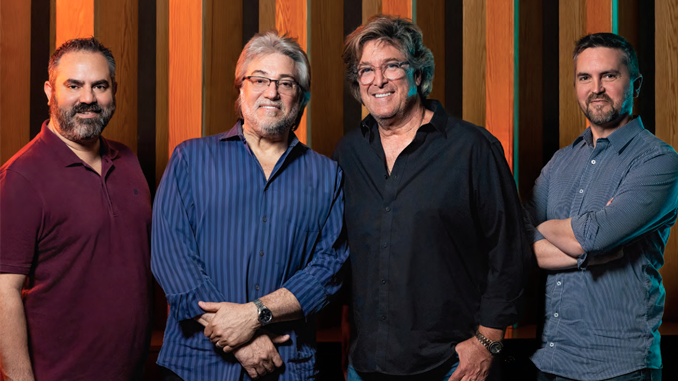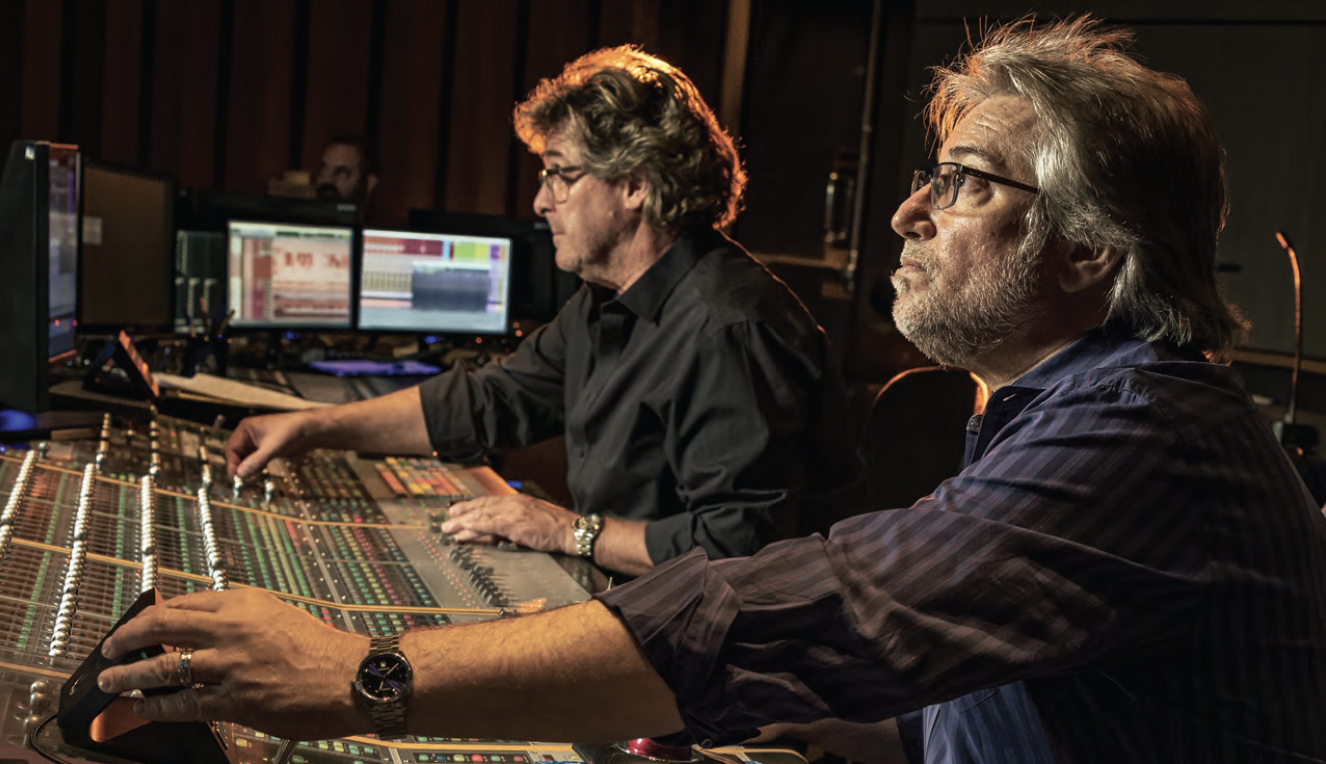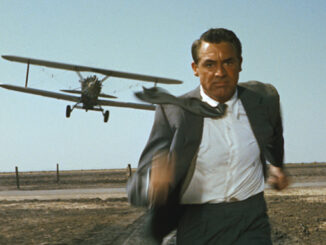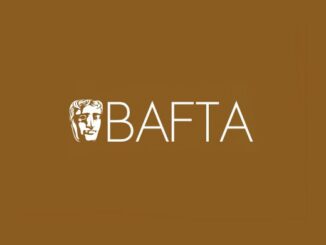
By Kristin Marguerite Doidge
FX’s “Shōgun,” an original adaptation of James Clavell’s bestselling novel, is an epic saga set in Japan in the year 1600 at the dawn of a century-defining civil war. The new 10-episode limited series premiered on FX and Hulu in February and features an acclaimed Japanese cast that is unprecedented for an American production. Showrunner Justin Marks (who co-wrote with his wife Rachel Kondo) took painstaking efforts to deliver the look and sounds of the Japanese feudal era. The score (composed by Oscar-winner Atticus and Leopold Ross along with Nick Chuba) sets the tone, from scenes of delicate customs and rituals to bloody action. Re-recording mixer Steve Pederson, who won an Academy Award for “Apollo 13,” and re-recording mixer Greg P. Russell along with sound supervisor Brian Armstrong collaborated with Marks to define the sound of that era in a precise and pristine fashion. CineMontage spoke with the sound team on Warner Bros. Dub Stage 12, where “Shōgun” was mixed, to find out more about how their symbiotic process helped them achieve the best soundtrack to match the formidable on-screen action.

CineMontage: What was most important to Justin in terms of creating an authentic sound?
Steve Pederson: Everything about this series strived to be authentic. That word has been used plenty in the description of the meticulous production values, and our goal for the sound in post was no different. I had the responsibility of mixing the dialogue and music. When it came to the dialogue, we frequently had Japanese actors speaking Japanese, and the script that was shot had gone through a vetting process to make sure it was period accurate in terms of the phrasing and inflection. However, after production, further study revealed that there were places where certain dialogue had been misspoken, even if it was just a word that was incorrectly said, with the inflection going up when it should have gone down. The average audience member wouldn’t know the difference, but the filmmakers would, and in their zeal to deliver dialogue as accurately as possible, they’d record the ADR. Our intention, first in editorial and then on the mix stage, was to use as little of the revised dialogue ADR as possible. Brian and dialogue editor John Creed would cut only what was required, and my task was to fit in a word or syllable without the revealing bump. Other important facets of the dialogue mix for Justin were room verbs [emulation of an on-camera room’s inherent reverb] and exterior slaps and echoes. Nearly all interiors had some treatment to give the dialogue a [sense of the on-screen] space. That added “color” would be manipulated to subtly move the perspective. “Shōgun” dialogue required clarity and dynamics, and my philosophy was to give the dialogue its deference, whether in Japanese or English, and not use the subtitles as a crutch.
Brian Armstrong: Just to go a little further into the dialogue side of things, in the effort to maintain period accuracy, the picture department would often use dialogue from takes that were not used in the final cut, which created sync issues. We felt our job at that point was to investigate and figure out what exactly they were after, what the “issue” was with the original take, and whenever possible, use as much of it as we could, surgically editing around the words or phrases or syllables that raised concern. John Creed and Ayako Yamauchi did an incredible job working around the dialogue obstacles.

Greg Russell: There are many interior dialogue scenes throughout the series, and we wanted to create a level of activity and energy to enhance movement and scale outside these locations. The sound editors created a variety of elements to work with, from the sounds of hammering and building, to horses and cows and other specific animals. Distant voices and very specific birds and bugs indigenous to the region were essential in creating an accurate and authentic soundscape to transport our audiences to Japan in the 1600s. Justin was very sensitive to the amount of energy that was outside, and we sometimes pared it back a little bit. We ended up striking a nice balance of activity and energy with regards to our atmospheres filled with rich textures to create interest, intrigue, and tension without being distracting.
That word “distracting” is a big deal for me, because if we’re taking away from the focus of the scene by something going on in the background, that’s never a good thing. So I spent quite a bit of time equalizing the high frequencies down and adding distant slap and echoes to give the off-stage elements a much more realistic perspective that sits in the scene without taking away from it. We owe a lot to Foley artists Sanaa Kelley and Matt Salib and Foley editor Ken Cain. They did a beautiful job bringing such detail to each scene.
CineMontage: How does working on the sound design/mixing for this show compare with other historical pieces you’ve worked on?
Pederson: When I think of historical films I’ve worked on in the past — you mentioned “Apollo 13,” which depicted a true story in the 1970s, and the story in “Schindler’s List” took place in the 1940s — both of them have a historical record that required our attention to be as authentic as possible. However, they are films recounting events in the 20th century. We’ve heard rockets (maybe not in person, but audio in some fashion), and we’ve heard vehicles and servo motors, trains and guns, etc. These sounds are familiar to us today, and the challenge was to get them right and blend them effectively.
But when it came to “Shōgun,” the specifics of a time long ago had to be considered. Everything was from a world I’ve never touched or heard, so I think that made us all sit up a bit more and pay attention. In our modern world, we always have a noise din around us of traffic, planes, leaf blowers or whatever. Japan in the early 1600s would be a stark contrast…nearly silent. We’d let the wind be gentle, let the bird song play. You could hear things far in the distance because it’s so immediately quiet.
Armstrong: It seems like a lot of period-piece soundtracks are dictated by technology, but here we let nature take the front seat. Jim Gallivan and Ben Cook tackled the sound design head on and created such a lush, living atmosphere. We found a collection of scientific recordings, “Bird Sounds of Japan.” Each track contained time of year, location, etc., all that nerdy info we love, which helped guide where all the birds were placed in the show. It’s hard to find usable nature recordings from Japan without modern language and/or technology. We were really building this natural world from the ground up using what we could find purely as a reference to sonically match frogs, crickets and other insects.
Russell: I’ve been known throughout my career to enjoy wreaking havoc on planet Earth on many occasions (like on “Armageddon”). That’s a joke, but I thoroughly enjoy it. But in “Shōgun,” when a massive earthquake hits Toranaga’s village, thousands of his soldiers, women and children are completely wiped out. Toranaga, who was buried alive in the quake, was saved by Blackthorne and others digging him out with their bare hands. It’s a very emotional scene and the culmination of a true bond between two of our lead characters. This was just one of many cinematic experienc-es the sound team was able to create for “Shōgun.” Brian, Jim and Ben created such wonderful sound design that was just eerie and haunting and on point. The shifting of the earth had such depth and dynamics and a level of detail and definition that made it, sonically and dramatically, one of my favorite sequences.
Pederson: I wanted to add here that the sequence originally had score all the way through. Justin wanted to explore the option of letting the quake play naturally, without music, so, just before the earthquake struck, we pulled music, and what an effect it had. Greg also pulled out all living nature sounds leaving just wind. Those couple seconds of unease did the trick.
Armstrong: The perfect example of “addition by subtraction.”
CineMontage: What role did the music play in helping to set the tone in both the quiet and more brutal moments?
Pederson: I had the good fortune to have met Atticus and Leo Ross on a series we worked on together a number of years ago. It was a show dealing with the supernatural, demonic possession, and had a dark horror side to it. Their score back then delivered the dark edge and tonal fear you’d expect with lots of distortion and tortured harmonics. When I heard early on that Atticus and Leo (along with Nick) were going to be the composers for “Shōgun,” I was excited to hear what their take would be on such an epic saga. I expected there would be less of a traditional score with a large orchestra, and more of a contemporary sounding score that would still fit the scale of “Shōgun,” but uniquely so.
I recently asked Leo: where does the design of the score on a show like this come from? He said, “We want to score the emotion and the character’s intentions. It’s less about geography and the time period.” If you look at the characters in “Shōgun,” even though we do have beautiful sets and costumes and locations, there are many duplicitous characters here. The score perfectly addresses the darkness in many of our characters.
I want to give a shout-out to our music editor, Melissa Muik, who was with us the whole time. She has a great relationship with Atticus and Leo and was a terrific asset on the stage. She was able to quickly manipulate the music stems and reposition them in a way that made Atticus and Leo happy, and at the same time, she also served Justin’s intention for whatever the score was trying to do in that moment.
Russell: In creating a well-balanced articulate sound mix, we treated this project like a feature film. Steve and I have very similar cinematic sensibilities because we’ve mixed a number of projects together. We both adhere to the philosophy that dialogue is king, and the narrative of the story and establishing clarity for these characters is key to our process. If Steve says, “Hey, can you pull that impact back?” I’m already on that fader. I’m feeling the same thing. We’re very much in sync that way, so you get to a more refined and detailed final mix a lot faster. We always strive for clarity and a well-balanced soundtrack with a great dynamic range, artist definition and detail. So as much as I love great sound effects and sound design and all of that, we are so cautious of making sure that the clarity within our dialogue track is pristine. Down to the nuance of subtle breaths and efforts. And I think we’ve achieved that throughout the series.
The music is obviously such a strong driving force and emotional component to this project. I recently rewatched the show after having been away from it for quite some time, and one of the things I mentioned to Steve and Brian is the incredible restraint that we showed holding back on the effects side to allow the music to live tonally and rhythmically in a great way. The music is just extraordinary throughout the show. Hats off to the entire music department.
That restraint allowed dynamics to have a powerful effect: from the most delicate water trickles to the bold sword clanks, to the lightest whispers, to the massive Taiko drums. We hope you hear it all. I’m so excited that the viewing audiences have been able to hear the work that we’ve all done.
Armstrong: A lot of times, it would be someone from the composing team who would ask, “Hey, can we try this scene without music?” The handoff between their modern soundtrack and our traditional, more nature-centric sound design made for a happy marriage of the two. It’s a direct result of us being able to have those discussions — “would this work better without music,” or “should we add something?” To have the comfort and confidence to make those suggestions is special.
The entire sound crew even worked side by side with many of the producers, including Hiroyuki Sanada (who also plays Yoshi Toranaga) and Eriko Miyagawa — from the Japanese ADR sessions to the final mixes. We are all so incredibly proud to be considered part of the “Shōgun” family.





